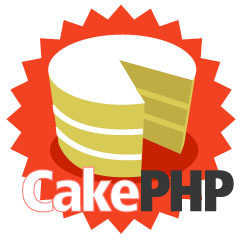
In this tutorial, we will show you how to install and configuration of CakePHP on your CentOS 7. For those of you who didn’t know, CakePHP is a framework that provides a robust base for your application, it’s very helpful for website development. It is secure and licensed under the MIT license which makes it a very suitable framework for web developers.
This article assumes you have at least basic knowledge of Linux, know how to use the shell, and most importantly, you host your site on your own VPS. The installation is quite simple. I will show you the step-by-step installation of CakePHP on the CentOS 7 server.
Prerequisites
- A server running one of the following operating systems: CentOS 7.
- It’s recommended that you use a fresh OS install to prevent any potential issues.
- SSH access to the server (or just open Terminal if you’re on a desktop).
- A
non-root sudo useror access to theroot user. We recommend acting as anon-root sudo user, however, as you can harm your system if you’re not careful when acting as the root.
Install CakePHP on CentOS 7
Step 1. First, let’s start by ensuring your system is up-to-date.
yum -y update
Step 2. Install the LAMP server.
A CentOS 7 LAMP server is required. If you do not have LAMP installed, you can follow our guide here. Also, install PHP mbstring and intl extensions using the command:
yum install php-mbstring php-intl
Step 3. Install CakePHP.
Download the latest stable version of CakePHP, At the moment of writing this article it is version 3.1.1:
cd /var/www/html wget https://github.com/cakephp/cakephp/archive/master.zip unzip master mv cakephp-master cakephp
We will need to change some folders permissions:
chown -R apache:apache cakephp
Step 4. Configuring MariaDB.
By default, MariaDB is not hardened. You can secure MariaDB using the mysql_secure_installation script. You should read and below each step carefully which will set a root password, remove anonymous users, disallow remote root login, and remove the test database and access to secure MariaDB.
mysql_secure_installation
Configure it like this:
- Set root password? [Y/n] y - Remove anonymous users? [Y/n] y - Disallow root login remotely? [Y/n] y - Remove test database and access to it? [Y/n] y - Reload privilege tables now? [Y/n] y
Next, we will need to log in to the MariaDB console and create a database for the CakePHP. Run the following command:
mysql -u root -p
This will prompt you for a password, so enter your MariaDB root password and hit Enter. Once you are logged in to your database server you need to create a database for CakePHP installation:
MariaDB > CREATE DATABASE cakephp; MariaDB > GRANT ALL PRIVILEGES on cakephp.* to 'cakephp'@'localhost' identified by 'YoUrPaS$w0rD'; MariaDB > FLUSH PRIVILEGES; MariaDB > exit
Now make a copy of app/Config/database.php.default as app/Config/database.php:
cp app/Config/database.php.default app/Config/database.php
Next, edit app/Config/database.php file update all database settings in the default section as created above:
###nano app/Config/database.php
class DATABASE_CONFIG {
public $default = array(
'datasource' => 'Database/Mysql',
'persistent' => false,
'host' => 'localhost',
'login' => 'cakephp',
'password' => 'YoUrPaS$w0rD',
'database' => 'cakephp',
'prefix' => '',
//'encoding' => 'utf8',
);
}
Step 5. Configuring Apache web server for CakePHP.
It is time to configure Apache. Edit your Apache configuration file:
nano /etc/httpd/conf/httpd.conf
Add the following lines at the end of the file:
<VirtualHost *:80> ServerAdmin admin@yourdomain.com DocumentRoot /var/www/cakephp/app/webroot ServerName yourdomain.com ServerAlias www.yourdomain.com <Directory /var/www/html/cakephp> Options FollowSymLinks AllowOverride All </Directory> ErrorLog /var/log/httpd/yourdomain.com-error_log CustomLog /var/log/httpd/yourdomain.com-access_log common </VirtualHost>
Now, we can restart Apache so that the changes take place:
systemctl restart httpd.service
Step 6. Accessing CakePHP.
CakePHP will be available on HTTP port 80 by default. Open your favorite browser and navigate to http://your-domain.com/ or http://server-ip and complete the required steps to finish the installation. If you are using a firewall, please open port 80 to enable access to the control panel.
Congratulations! You have successfully installed CakePHP. Thanks for using this tutorial for installing CakePHP in CentOS 7 system. For additional help or useful information, we recommend you check the official CakePHP website.